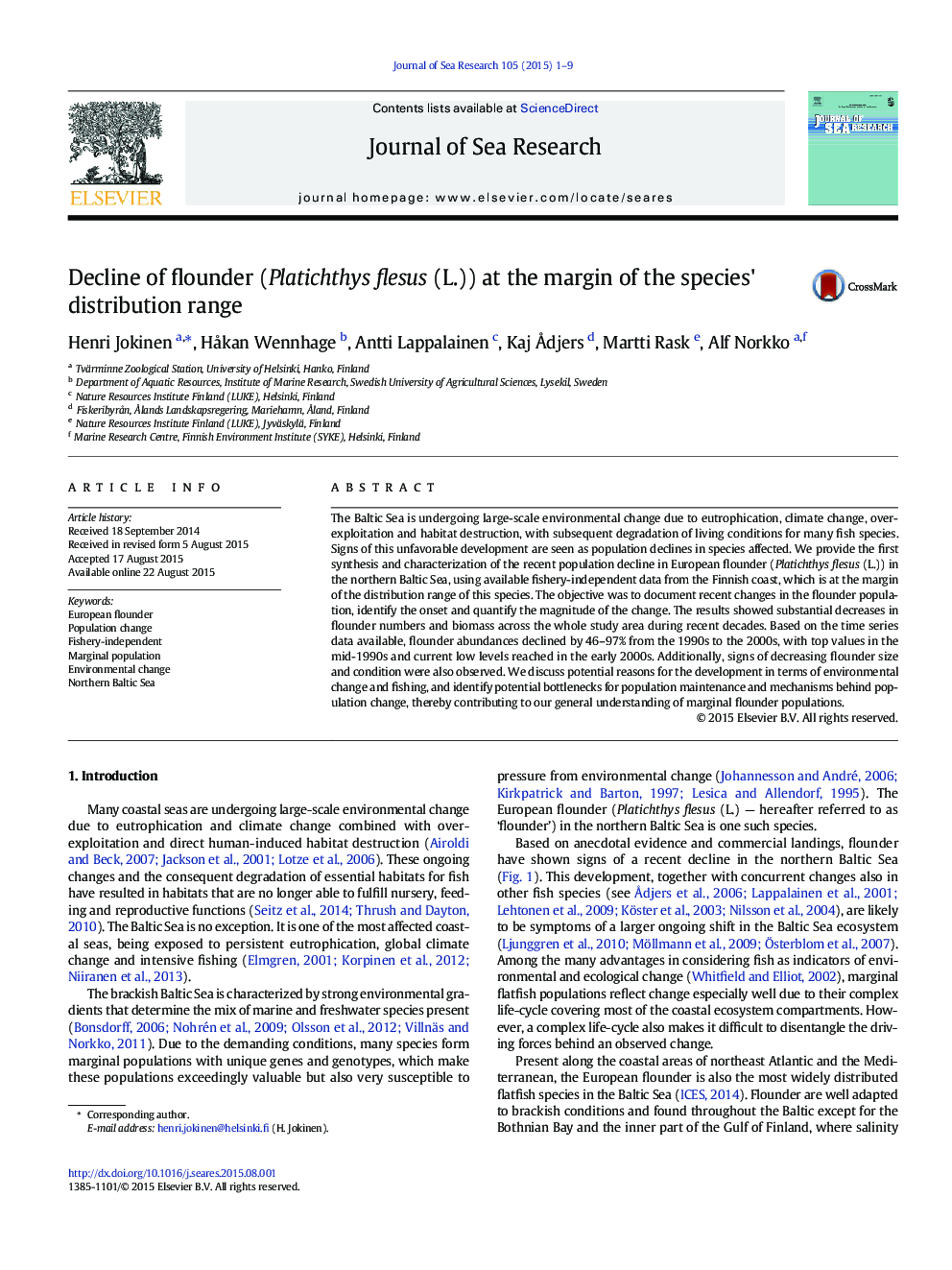| Article ID | Journal | Published Year | Pages | File Type |
|---|---|---|---|---|
| 4549587 | Journal of Sea Research | 2015 | 9 Pages |
•A recent decline of European flounder in the northern Baltic Sea is synthesized.•The results showed a 46–97% decline from the mid-1990s to the early 2000s.•Multiple ecosystem changes are hypothesized as the likely cause.
The Baltic Sea is undergoing large-scale environmental change due to eutrophication, climate change, over-exploitation and habitat destruction, with subsequent degradation of living conditions for many fish species. Signs of this unfavorable development are seen as population declines in species affected. We provide the first synthesis and characterization of the recent population decline in European flounder (Platichthys flesus (L.)) in the northern Baltic Sea, using available fishery-independent data from the Finnish coast, which is at the margin of the distribution range of this species. The objective was to document recent changes in the flounder population, identify the onset and quantify the magnitude of the change. The results showed substantial decreases in flounder numbers and biomass across the whole study area during recent decades. Based on the time series data available, flounder abundances declined by 46–97% from the 1990s to the 2000s, with top values in the mid-1990s and current low levels reached in the early 2000s. Additionally, signs of decreasing flounder size and condition were also observed. We discuss potential reasons for the development in terms of environmental change and fishing, and identify potential bottlenecks for population maintenance and mechanisms behind population change, thereby contributing to our general understanding of marginal flounder populations.
